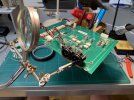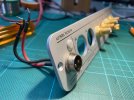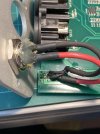- Joined
- Feb 23, 2016
- Messages
- 20,747
- Likes
- 37,554
The easy way to do this is put the passive very close to the speakers. The cable feeding the passive hardly matters. What matters is the cable between passive output and speaker input. Best would be right next to each speaker. Not convenient. In any case, assuming the phono output has low enough impedance 10k is going to be the way to go. 25 feet between passive volume and speakers is going to be iffy.
Last edited:





